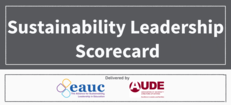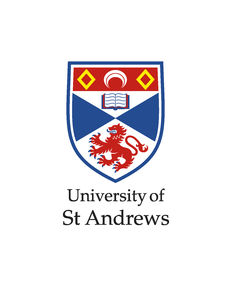The University of St Andrews shares their experience of using the Sustainability Leadership Scorecard
What was pivotal in you securing senior management authorisation to use the Sustainability Leadership Scorecard (SLS)?
Our Sustainability Manager identified the SLS as his preferred tool for carrying out an institutional sustainability “gap analysis”. Its use was discussed and agreed at a meeting of our Sustainability Development Working Group (presided over by the University’s Quaestor and Factor and attended by representatives from across the institution).
What was your approach to completing the Sustainability Leadership Scorecard?
We have identified leads for each individual Framework. Sometimes this is one person, for example for the Risk Framework, the lead is our Risk Manager. However, some Frameworks, especially those around Engagement and Health and Wellbeing, crosscut between departments and units. Public and Community Engagement, for example, is carried out by our Public Engagement with Science team, Transition University of St Andrews, our Corporate Communications team and others. For these crosscutting Frameworks we consulted with up to 4 different people before assigning a score and narrative that all parties were happy with. Other Frameworks were completed by committees, for example, the Learning and Teaching Framework was completed by our Sustainability in the Curriculum Committee. We plan, in time, to “embed” the Scorecard within the institutional formal reporting system via the Planning Office.
Did you encourage colleagues from other Departments to participate and help you with the Sustainability Leadership Scorecard?
Yes, we have had input from colleagues from across the institution. We identified potential leads, emailed them explaining what the SLS was, who was instigating its usage (Principal’s office via our Quaestor) and asked for a meeting. This process has been led by our Sustainability Officer, who makes initial contact and holds each meeting. This allows continuity of questioning and ensures the process is robust. We have taken our “best guess” at scoring each section as a starting point for our meetings.
What are the 3 top benefits of using the Sustainability Leadership Scorecard?
- Allows us to have conversations about sustainability with people at the institution we may not otherwise have access to.
- Allows us to identify gaps in how we are performing in sustainability using a consistent approach, and how these can be filled.
- Can be used as a planning tool for some Frameworks, for example, our Sustainability in the Curriculum Committee is using the Teaching and Learning Framework for this purpose.








 Except where otherwise stated, content on this site is
licensed under a Creative Commons Attribution 3.0 License.
Except where otherwise stated, content on this site is
licensed under a Creative Commons Attribution 3.0 License.
